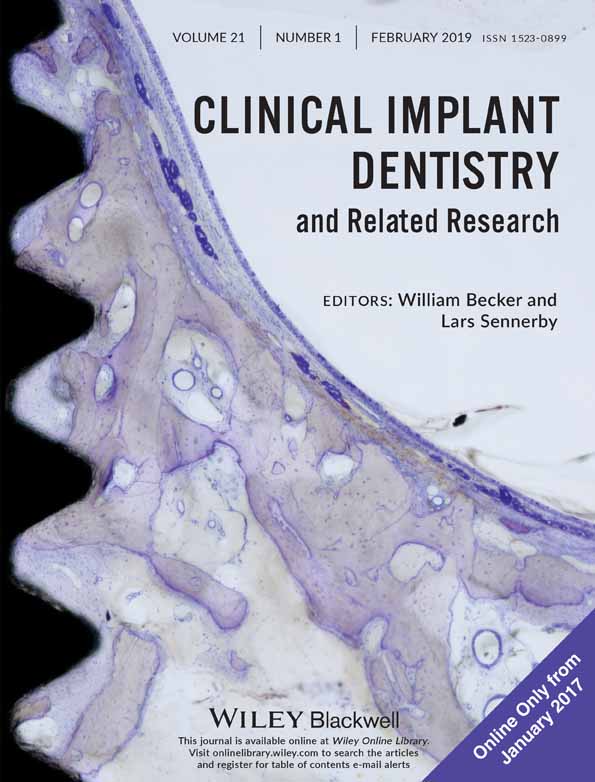Clinical application of autogenous demineralized dentin matrix loaded with recombinant human bone morphogenetic-2 for socket preservation: A case series
Abstract
Background
Demineralized dentin matrix (DDM) has potential application as a carrier for recombinant human bone morphogenetic protein-2 (rhBMP-2) in bone regeneration.
Purpose
To evaluate the efficacy of DDM loaded with rhBMP-2 for socket preservation.
Materials and Methods
DDM loaded with rhBMP-2 (DDM/rhBMP-2) was applied to 10 experimental sites and DDM alone to 6 control sites. The changes in height and width of the extraction socket after preservation were measured by cone beam computed tomography. Trephine cores were harvested for histomorphometric evaluation before placement of the implant.
Results
The reductions in height and width of the socket were more significant in the group treated with DDM than in the group treated with DDM/rhBMP-2. The amount of new bone formation was 34.39% with DDM/rhBMP-2 and 29.75% with DDM; the respective amounts of residual dentin were 8.35% and 16.15%. Although the differences were not statistically significant, the dimensional changes, amount of bone formation, and replacement of DDM in DDM/rhBMP-2 with bone were superior to those of DDM alone.
Conclusions
Within the limitations of this study, we suggest that DDM may be a potential carrier for rhBMP-2 and that it may be possible to reduce the rhBMP-2 concentration to 0.2 mg/mL.
CONFLICT OF INTEREST
No conflicts of interest.




